Toyota’s popular RAV4 is known for its segment-defining practicality. But how does the model stack up against other SUVs in Toyota’s lineup?
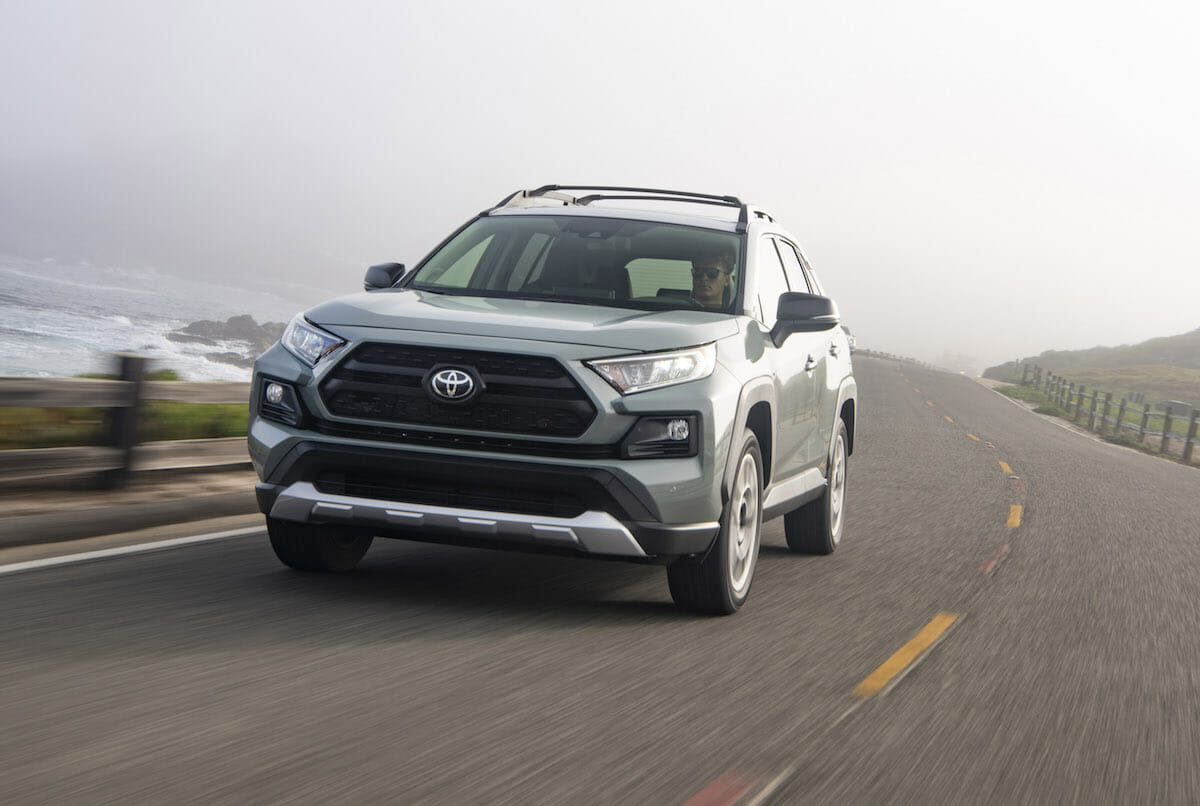
It’s not often that a vehicle can lay claim to having pioneered an entire market segment, but the Toyota RAV4 is one car that can certainly make it. Prior to its introduction in the 1990s, those looking for a big, practical, high-riding vehicle had to settle for a true off-roader, but the RAV4 arrived as something different – a vehicle that blended the practicality and high seating position of a traditional 4×4 with the size and familiar driving dynamics of an ordinary passenger car.
Now in its fifth generation, the RAV4’s success in the compact SUV segment isn’t slowing. Good Car, Bad Car reports a U.S. sales peak of 448,068 units in 2019 alone, and global sales have multiplied 17 times since its first-ever year on sale.
Let’s now review the cargo space and interior storage options of the Toyota RAV4’s five generations – all of which were sold in North America – to discover and highlight just how practical this SUV is.
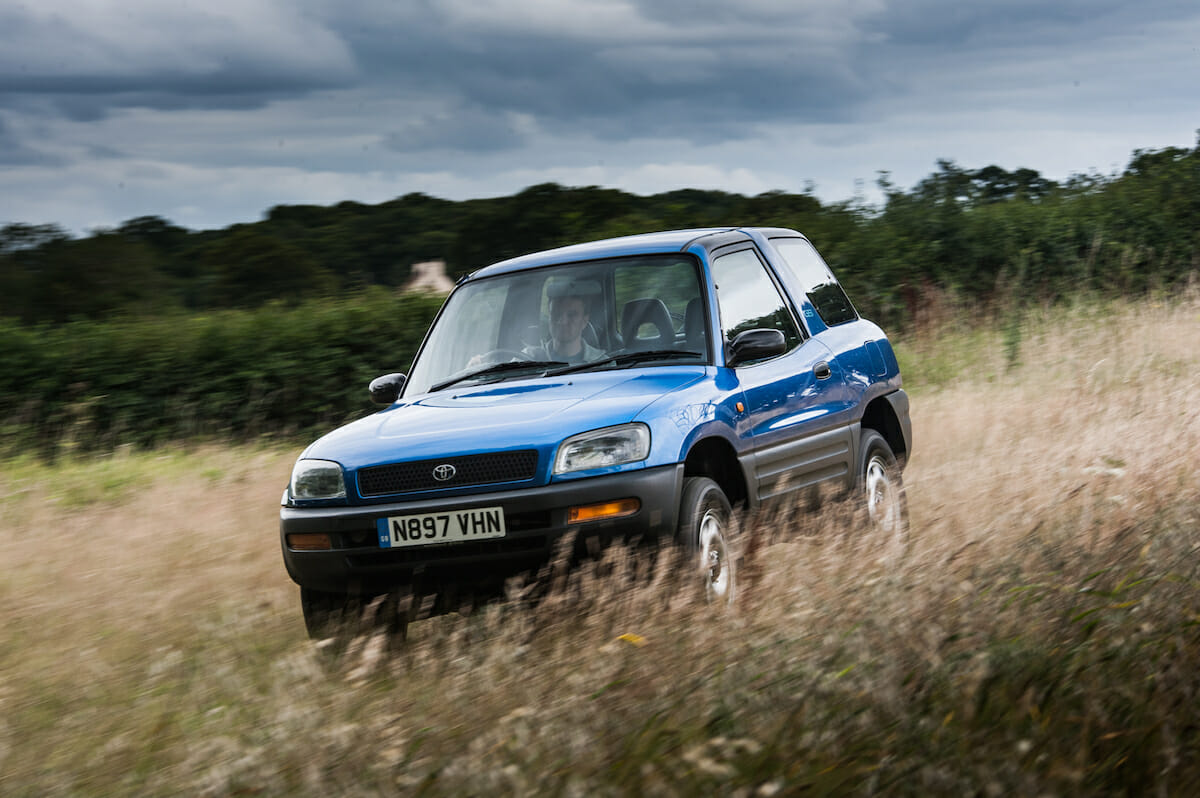
Toyota Debuts its ‘Recreational Active Vehicle’
The original idea behind the RAV4 dates all the way back to 1986 – 10 years before it debuted in the U.S. – when discussions surrounding its unique styling first began.
Although, it wasn’t until three years later that a physical concept car (previewing the three-door short wheelbase model) was first shown at the 1989 Tokyo Motor Show. The RAV4 name was intended to stand for “Recreational Active Vehicle with 4-wheel drive,” although front-wheel-drive versions of all generations have been produced.
Seeking to deliver car-like driving dynamics, Toyota utilized the best components from other models in its lineup. The basic platform itself was borrowed from the Corolla of the time, while the engine came from the Camry. It boasted some race-bred pedigree, too, thanks to the suspension, full-time all-wheel-drive system (even offered with an optional locking center differential), and transmission that was lifted from the rally-bred Celica GT-Four.
It wasn’t until 1996 that the model launched in America. At this stage, the original three-door, four-seat version had been joined by a five-door model that was a true five-seater, measuring at around 17 inches longer than the original three-door. This was done to address one of the key complaints the initial model faced: a lack of cargo space behind the rear seats.
An impressive electric version of the first-gen RAV4 was also offered in California from 1997 for fleets (but only sold to private buyers in 2002). These editions featured nickel-metal hydride batteries that would deliver around 100 to 120 miles of range after five hours of charging. A short-lived cabriolet model was also offered in 1998, although it won few admirers.
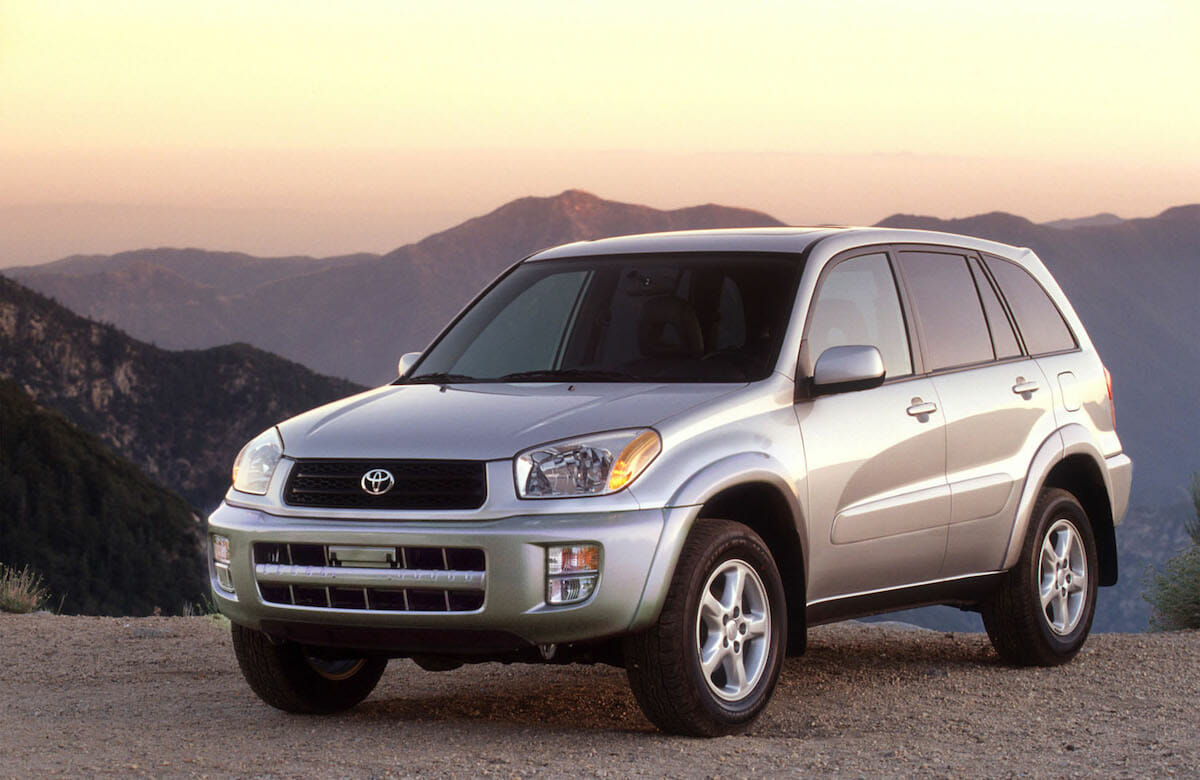
Second-gen RAV4 Takes on the CR-V
When the second-generation model arrived in the latter half of 2000 – now facing competition from the likes of the Subaru Forester and Honda CR-V – the three-door version disappeared from the U.S. Instead, it soldiered on as a five-door only.
Nonetheless, the model’s success continued despite some drastic changes to the new model. Designed to look more aggressive and aerodynamic, it won over a high proportion of female buyers in the U.S. – more than any other car aside from the Volkswagen New Beetle.
The all-wheel-drive system was this time lifted from the Lexus RX 300, and a larger 2.4-liter engine was introduced due to complaints about its smaller engine options feeling underpowered.
Most notably, though, the new model’s practicality was improved drastically thanks to a rear seat that could be split-folded, was on rails to slide forward and backward, and even removed entirely to free up even more cargo space.
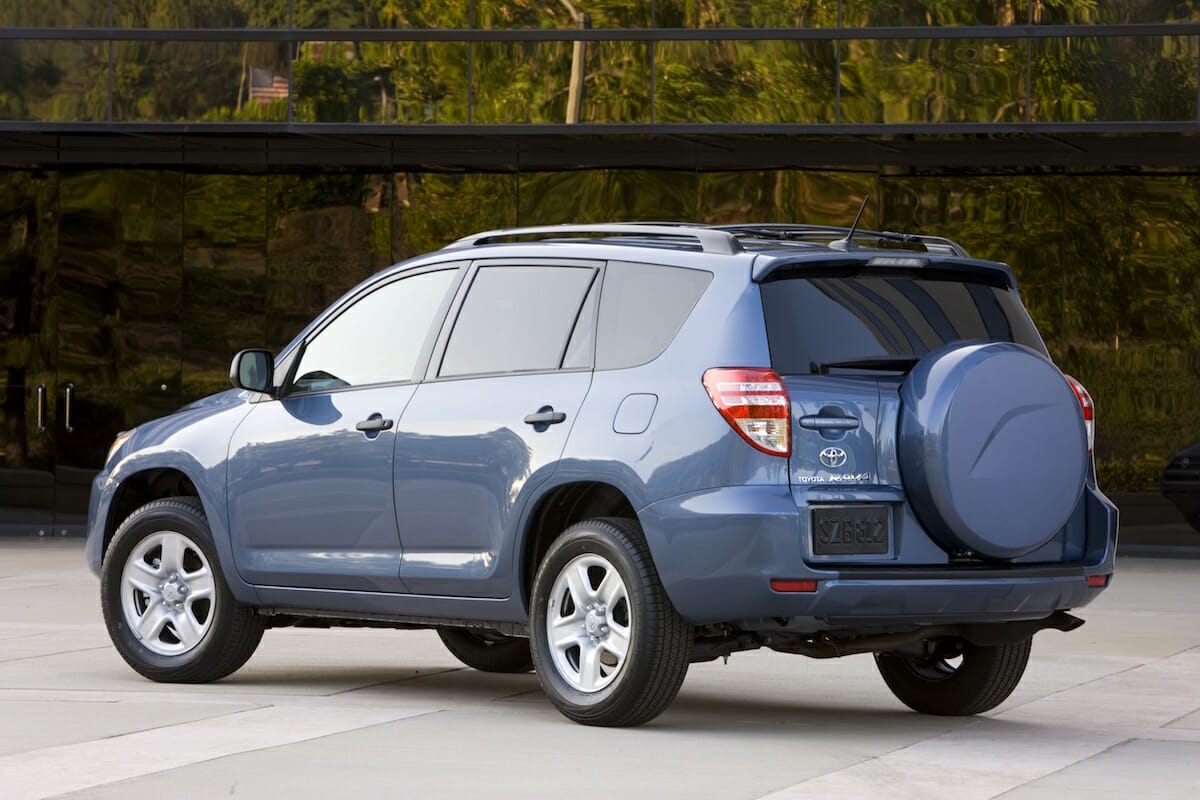
Third-gen Debuts RAV4 Three-row Version
The third-generation RAV4 introduced for 2006 saw a more grown-up and mature model design, with a three-row version even being offered to help it appeal to larger families with young children. The full-time all-wheel-drive systems of older models were ditched for a part-time system – something causing earlier models to be held in higher regard when it comes to off-road ability – although ground clearance was increased to compensate slightly.
A range-topping V6 version was offered for those after more power, and once again in California a second RAV4 EV was offered, this time utilizing more modern lithium-ion battery packs developed by Tesla. For the first time, the RAV4 became Toyota’s best-selling SUV in the USA.
Once again, the RAV4 grew significantly with the introduction of the 2013 fourth-generation model, although the three-row variant was dropped. Most noticeably, the fourth-gen model saw the RAV4’s traditional side-hinged tailgated dropped in favor of a more conventional top-hinged tailgate.
By 2019, the RAV4 had achieved the status of being the best-selling SUV in the world, and this year also saw the introduction of the current fifth-generation model.
Now sat on the Toyota New Global Architecture platform, the RAV4 range more widely adopted hybrid drivetrains, including the introduction of a plug-in hybrid version, which is also the most powerful RAV4 ever offered.
In early 2020, the RAV4 crossed 10 million global sales – no easy feat – and North America continues to be the model’s strongest market.
Toyota RAV4 Interior Storage
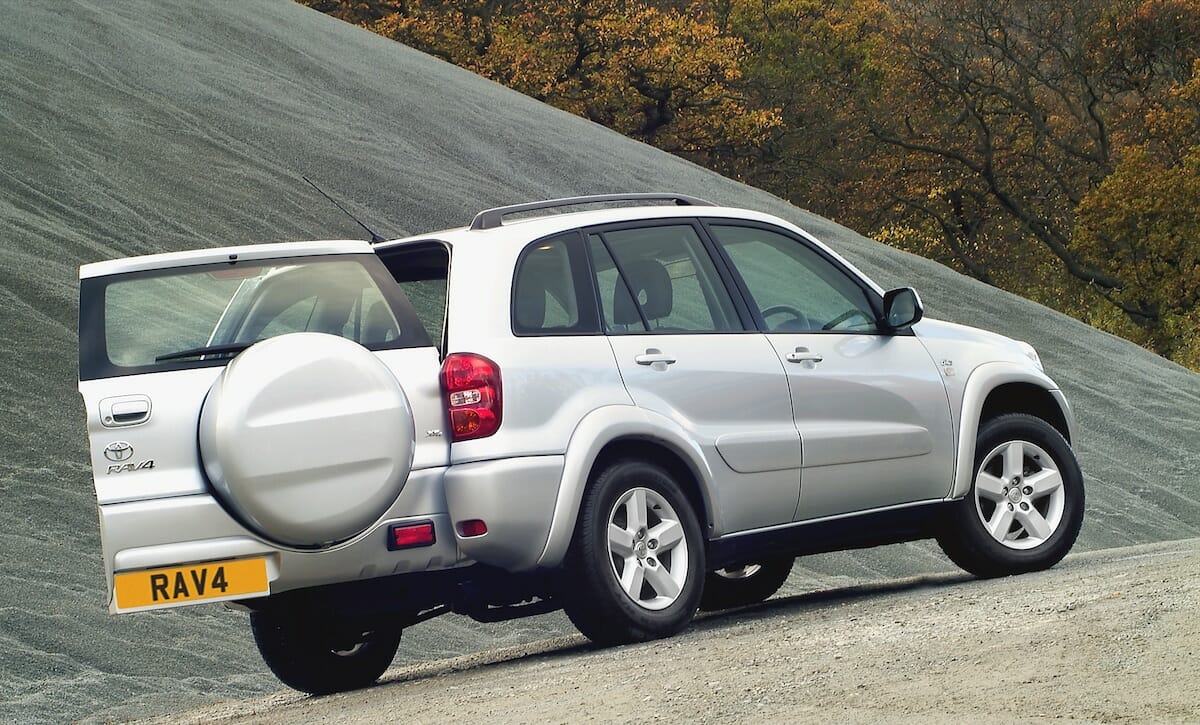
First-generation RAV4 (1996-2000)
While the first-generation RAV4’s small size may have made it more practical in cities than larger Toyota SUVs like the 4Runner, its somewhat smaller size meant did reduce its cargo capacity.
On the three-door model, a mere 9.3 cu. ft. of cargo space was offered with the second-row seats in place, growing to only 34.7 cu. ft. with the second-row folded down.
Thankfully, the five-door model was on offer for those after more space, and the 26.8 cu. ft. it offered with the second row in place and 57.9 cu. ft. without made it far more practical for those looking to haul larger items.
However, these figures were quickly beaten by the likes of the first-generation Subaru Forester– one of its earliest rivals – and its 33.2-64.6 cu. ft. of cargo space.
However, interior storage options were somewhat limited in the original model. Although there were pockets on the back of both front seats, there were no rear door pockets on the five-door version.
Thankfully, the front doors did feature small door pockets, and there were two small storage slots on the dashboard. Just one cupholder was on offer though between the two front seats, although models without airbags scored a small storage tray with a second cupholder where the passenger airbag would have been.
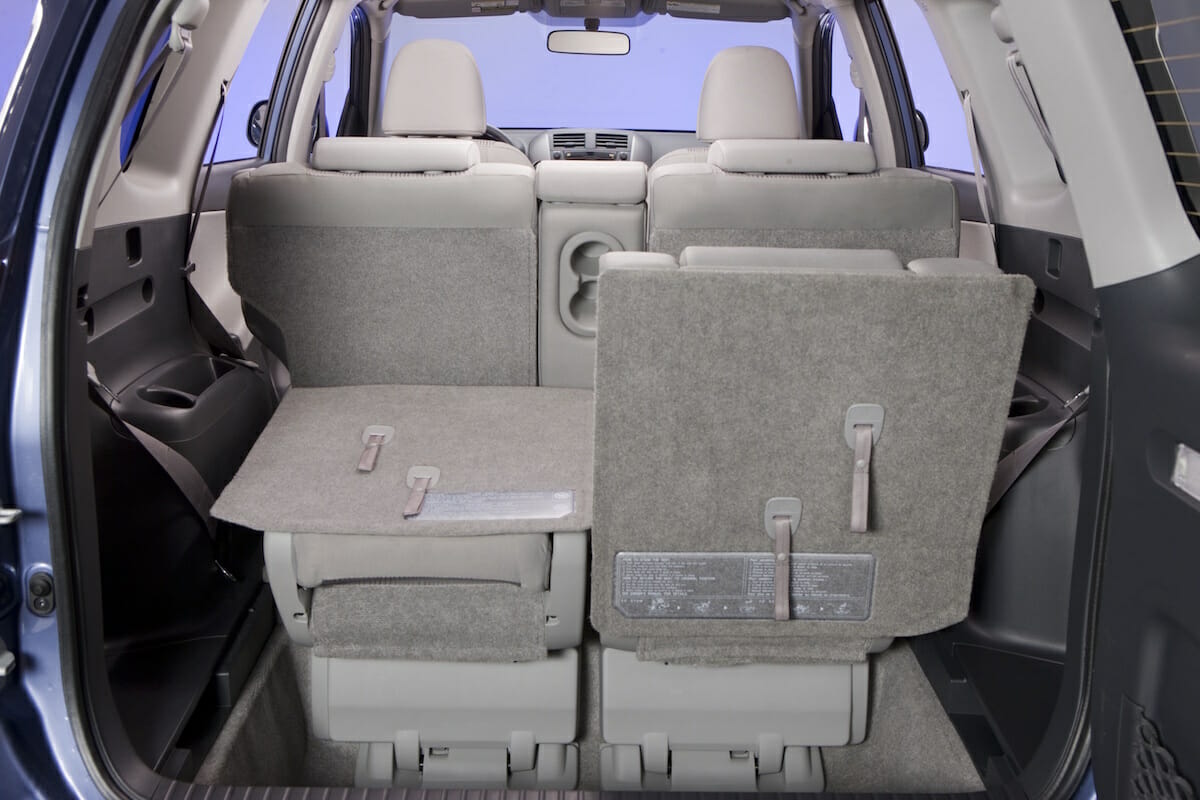
Second-generation RAV4 (2001-2005)
The second RAV4 generation saw the model grow in size – along with only being offered as a five-door in North America – and this was reflected in its much larger cargo area size.
Now offering 29.2 cu. ft. as a minimum with the second row in place, as much as 68.3 cu. ft. was on offer with the second row folded and removed – not class-leading figures, but, as TopSpeed notes, it was right on par with the likes of the Ford Escape. However, it did at least offer more room for passengers than many key rivals including the Kia Sportage, Honda CR-V, and Hyundai Santa Fe.
The rear seats could also be easily removed and were able to be slid forward and backward for more versatile storage options. There were side bins and multiple tie-down hooks and even six shopping bag hooks fitted in the cargo area as well to ensure everything stays in place.
Although things like the original RAV4’s slots on the dashboard disappeared, two cupholders fitted ahead of the shifter were made standard, while there was also a storage pocket next to the handbrake in the center console to make up for it.
A sunglasses holder was also fitted in the roof next to the front map lights, an early example of something that is now common on many modern vehicles. Rear door pockets were also now fitted to allow for more storage for rear-seat passengers.
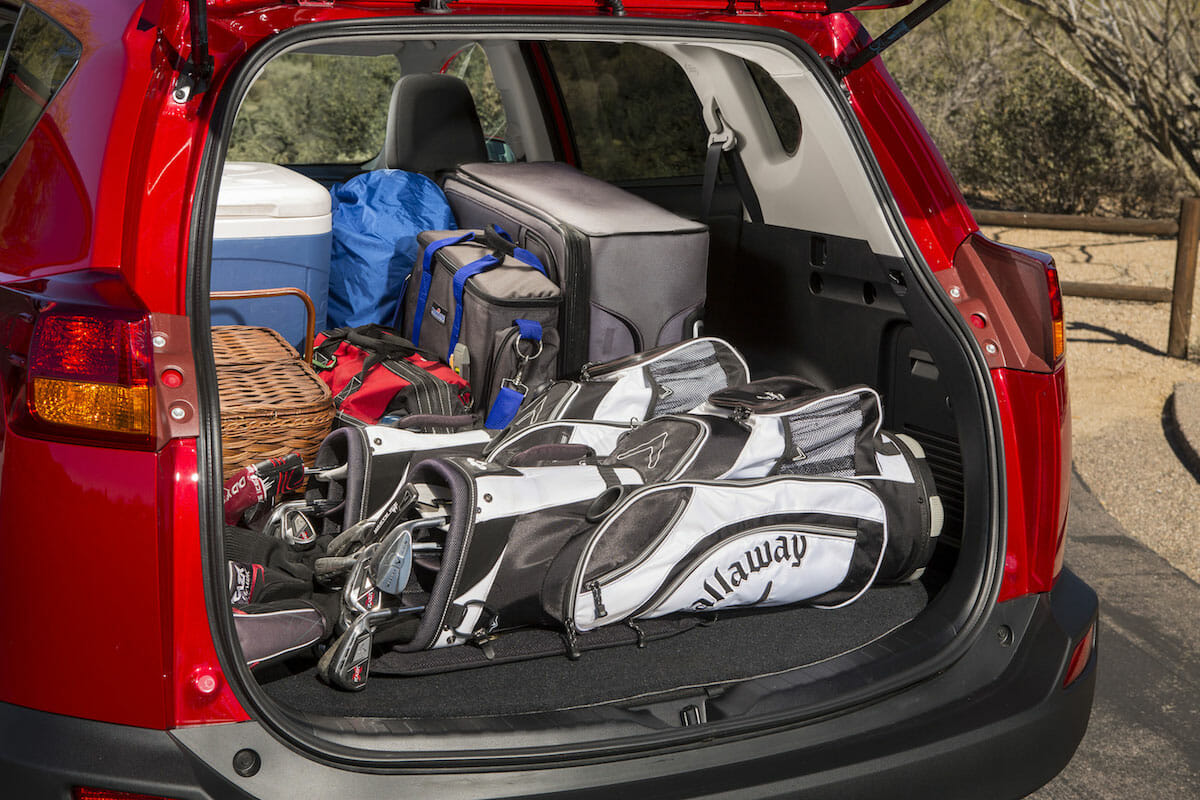
Third-generation RAV4 (2006-2012)
2006 saw the most substantial generational size increase of any RAV4, with its cargo area offering a generous 37.2 cu. ft. with the second row in place, growing to a cavernous 73.0 cu. ft. with the second-row folded.
As noted in a Car and Driver comparison test in 2008, these figures put it right on par with the Honda CR-V and Mitsubishi Outlander of the time for total cargo capacity. The RAV4 also offered more cargo space than all other models included in this comparison, including the Nissan Rogue and Hyundai Tucson – although the Outlander offered slightly more with the second-row seats in place.
To substantially boost its interior storage options, the third-gen RAV4 was given two gloveboxes on the passenger side of the dashboard, although only the lower glovebox was lockable. The small storage slot to the left of the steering wheel also made a return, too. More cupholders were on offer as well thanks to two being fitted in the back of the middle rear seat, which acted as an armrest when folded down.
Important to note is that in three-row models, the third-row seat bases raise up out of the floor, rather than the seat-backs folding down on top, so there was even more room for taller items behind the third-row with the seats raised up.
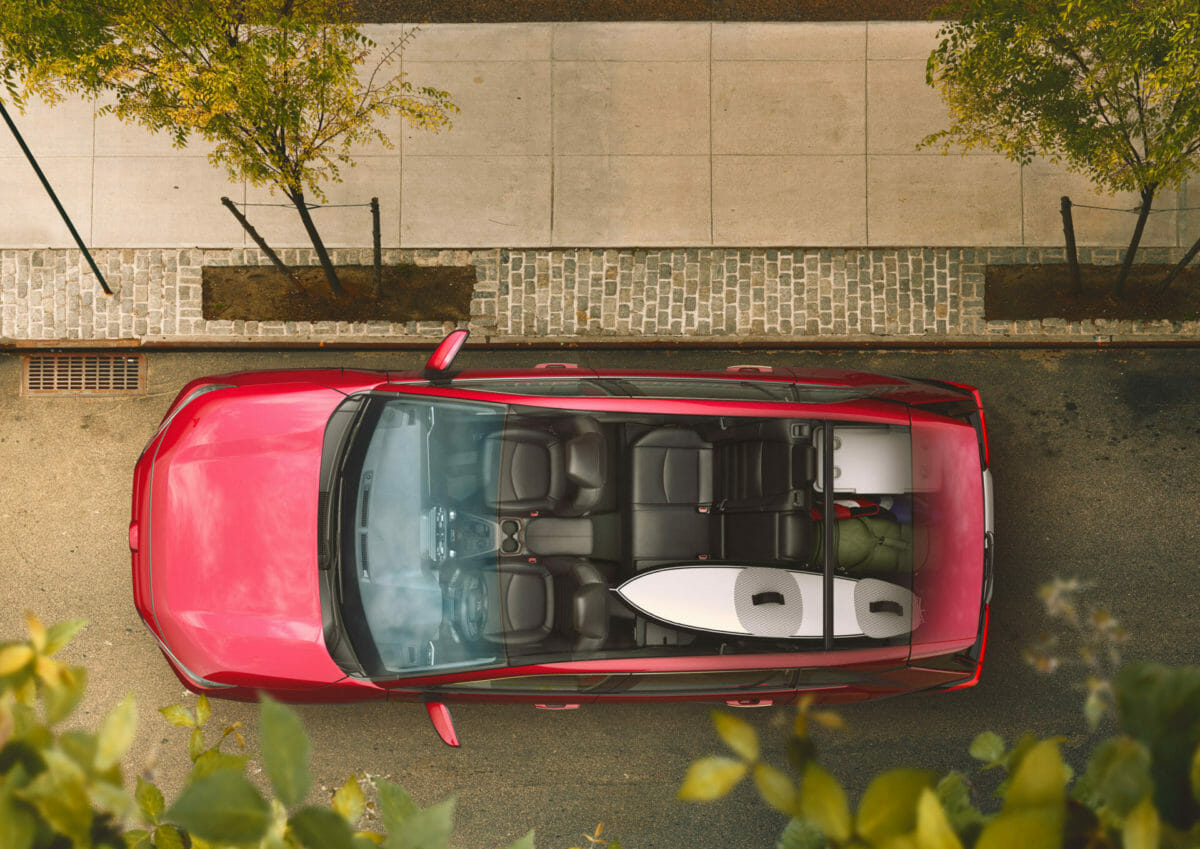
Fourth-generation RAV4 (2013-2018)
Of all RAV4 models, the fourth generation was the largest, offering a best-in-class 73.4 cu. ft. of cargo space with the rear seats folded, while with them in place, a very impressive 38.4 cu. ft. To make accessing the cargo area easier, the side-hinged tailgate all RAV4s had featured up to this point was dropped in favor of a now-more conventional top-hinged tailgate, with the availability of hands-free opening on higher trim levels.
The secondary glovebox disappeared with the introduction of the fourth-gen model, as did the small slot on the driver’s left, but a wider storage slot was fitted on the top of the dashboard. The front door pockets were also enlarged to accommodate bottles – handy given one of the cupholders ahead of the shifter was lost and replaced with a smaller triangular storage cubby. A true rear center armrest was also fitted which contained two cupholders as well, although full-size rear door pockets were lost with just a single bottle holder in their place. Two sets of LATCH car-seat mounting points were also fitted in the rear.
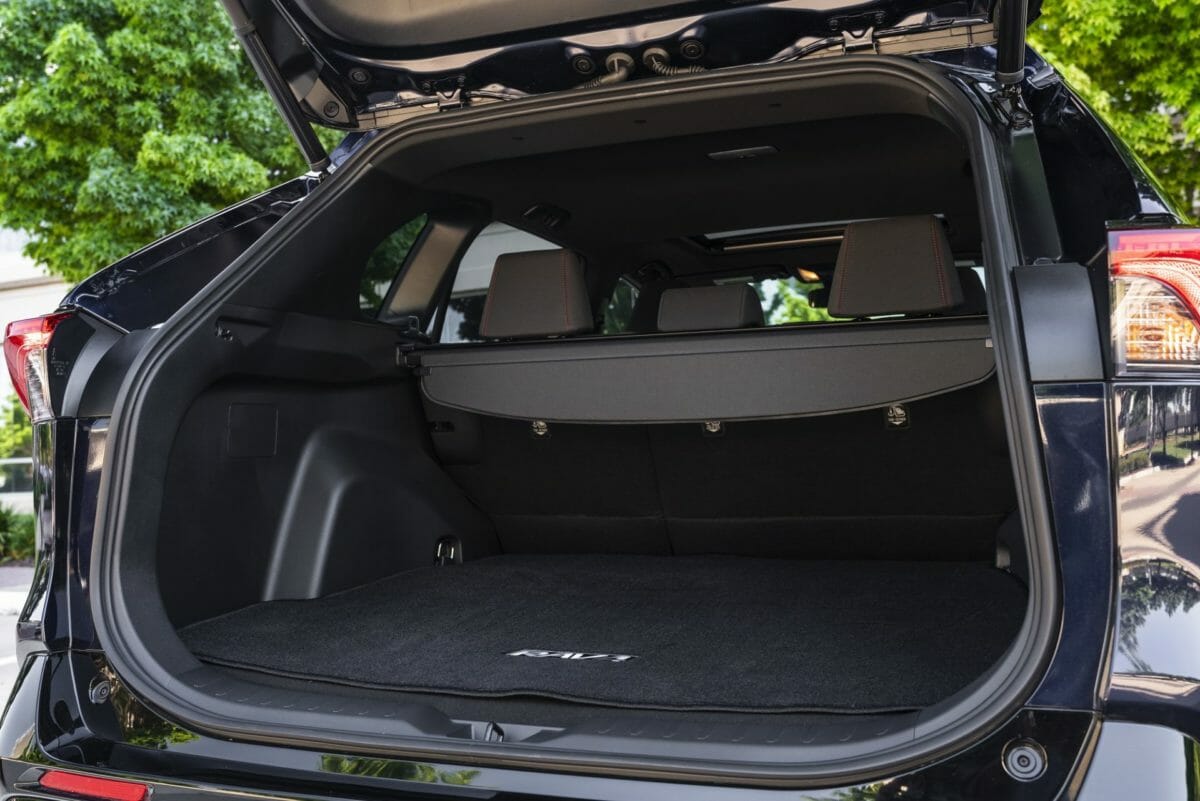
Fifth-generation RAV4 (2019-Present)
Although the current RAV4’s cargo area has shrunk slightly compared to the model it replaced, it still offers best-in-class figures of 37.6 cu. ft. with the second-row seats in place, and 69.8 cu. ft. with them folded flat.
However, this figure only applies to the regular gas engine and hybrid versions of the RAV4. As mentioned earlier, a plug-in hybrid version of the RAV4 – dubbed the RAV4 Prime – was introduced for 2021, and to accommodate its larger battery pack, the size of its trunk has decreased noticeably to 33.5 cu. ft. and 63.2 cu. ft. with the rear seats up and down respectively. Yes, it’ll offer better gas mileage and more power than the regular RAV4 Hybrid, but it certainly comes at the cost of practicality.
However, even the RAV4 Prime offers more cargo space than other similarly-sized SUVs in Toyota’s current lineup such as the Venza. As Autoblog found, the Venza’s sleeker styling with its sloping roofline costs it a lot of space in the cargo area, with only 28.8 cu. ft. by comparison.
Between this and the RAV4’s higher shoulder line and lower loading height, it’s certainly a far more practical option than the similarly-sized Venza, along with smaller Toyota SUVs such as the C-HR. To better its cargo area size, you’ll have to step up to the three-row Highlander or off-road-focused 4Runner.
A top-hinged tailgate is still fitted as it was on the fourth-gen RAV4, with power operation still available on selected higher-end versions. The slot on the dashboard to the left of the steering wheel makes a return yet again, while there’s also a large storage tray above the glove box on the passenger side. The tray at the bottom of the center stack can also be equipped with a wireless smartphone charger on certain versions.
Sadly, it does lack full-size rear door pockets though, with only a bottle holder in the rear doors instead.
Toyota RAV4: The Original Compact SUV
Since the RAV4’s introduction, ease of use compared to larger body-on-frame SUVs and practicality have always been at the forefront of its intent. Although earlier examples may still have been bested by key rivals like the Subaru Forester, Honda CR-V, and Mitsubishi Outlander in regards to cargo space, it did at least give domestics such as the Ford Escape a run for their money.
However, by 2013 the RAV4 had finally come out on top of the pack with the introduction of the fourth-generation model and continues to offer best-in-class cargo capacity to this day – ignoring, of course, the reduced cargo capacity of the RAV4 Prime plug-in hybrid variant.
An easy and logical conclusion is that, despite how spacious the current 2019-and-up RAV4 is, the fourth-generation model (2013-18) offers the most cargo space by the numbers with the 38.4-73.4 cu. ft. it has on offer. We wouldn’t discount the third-gen (2006-12) model though, as, with its dual gloveboxes and optional third-row seating, it’s got one of the most versatile interiors of all generations of RAV4.
Photos: Toyota
